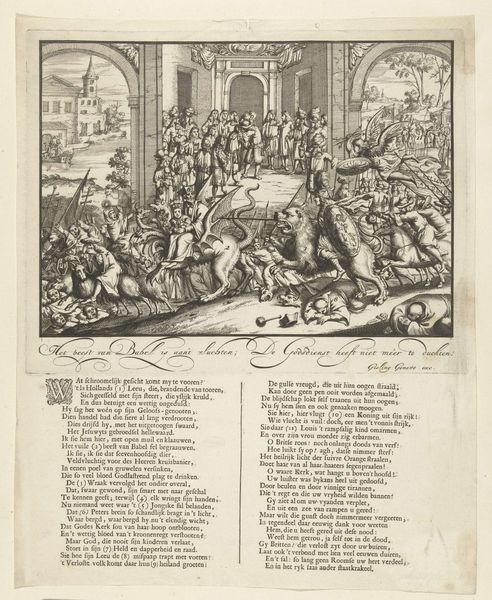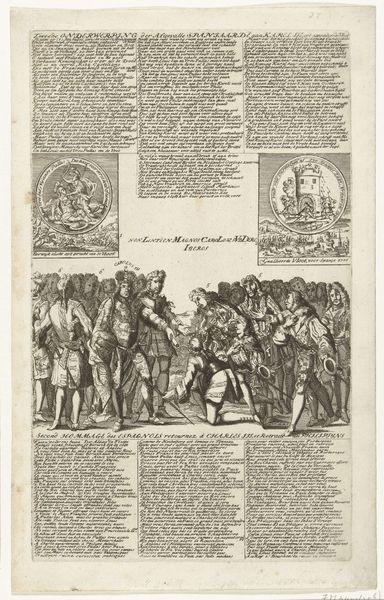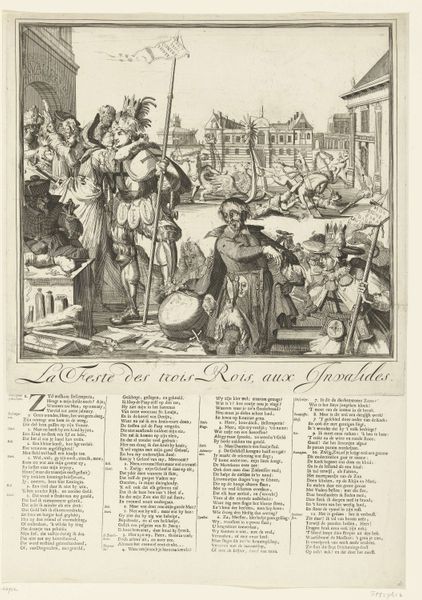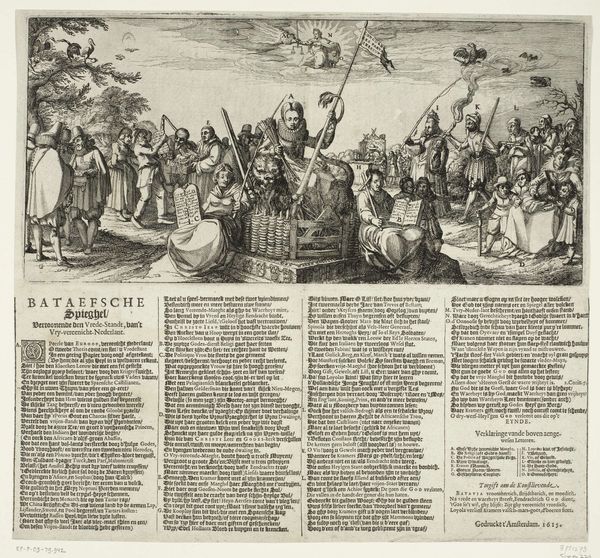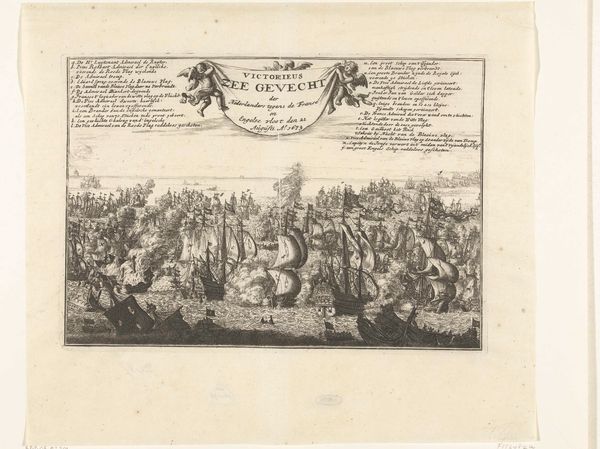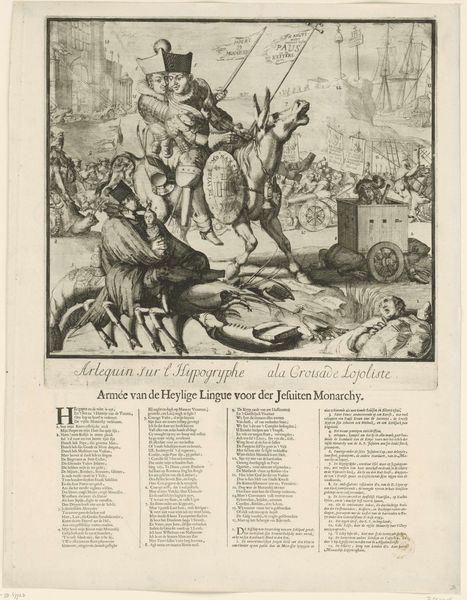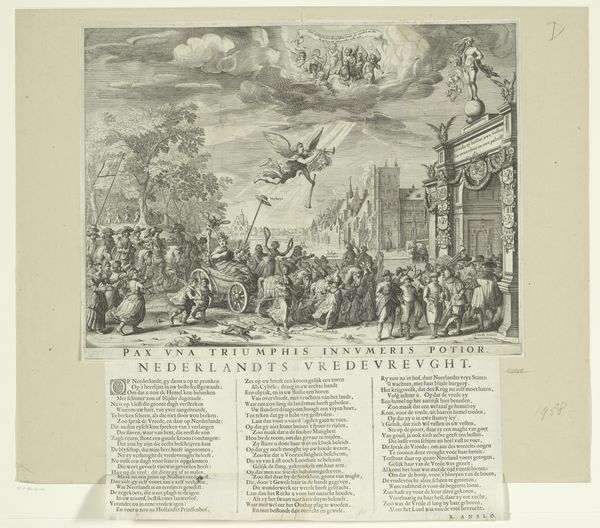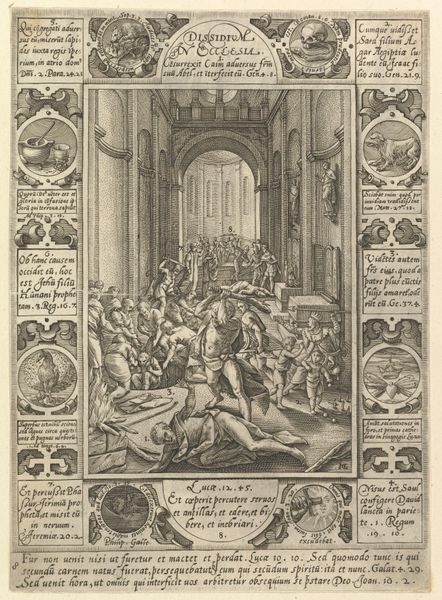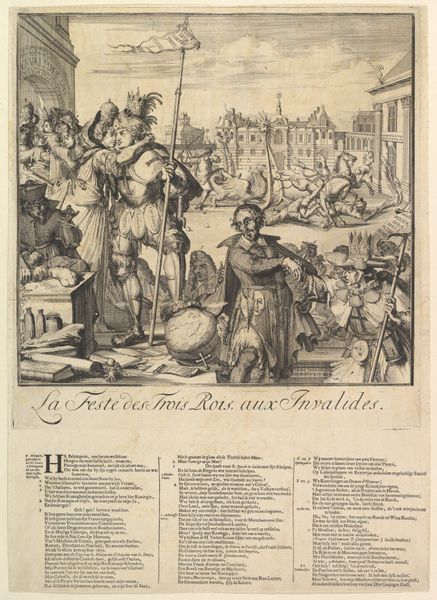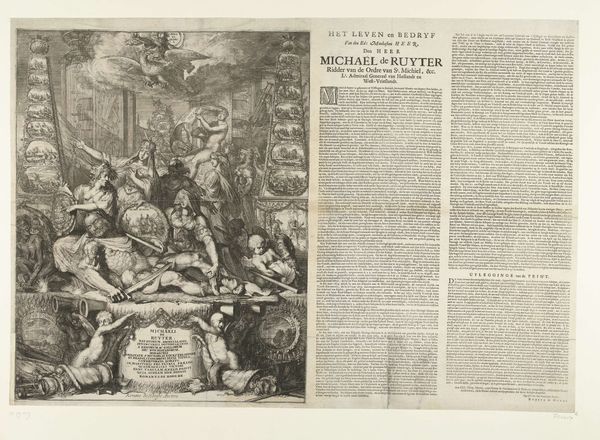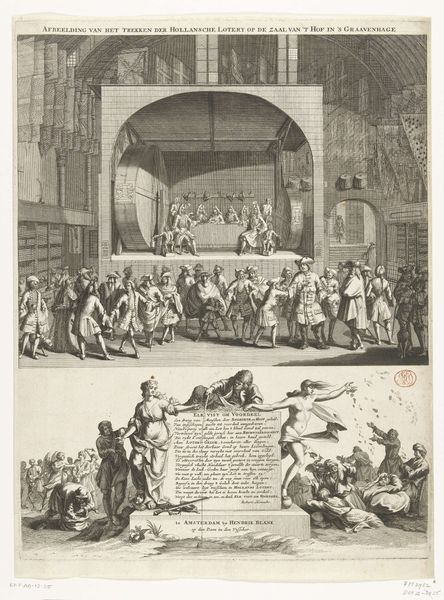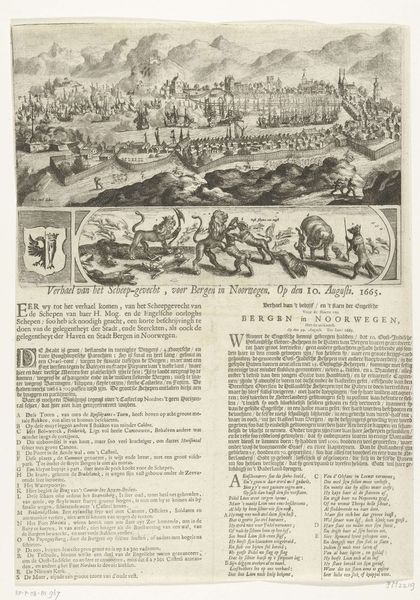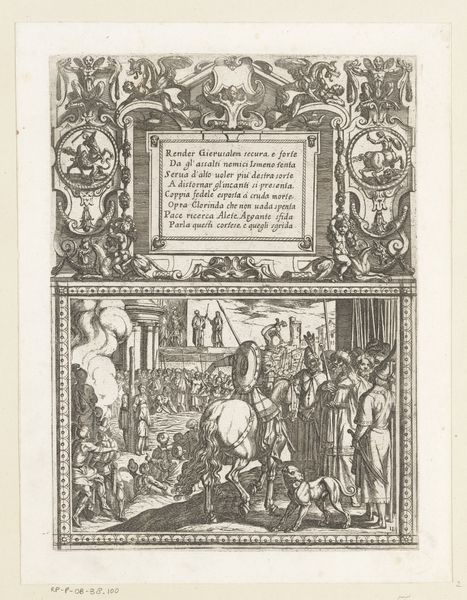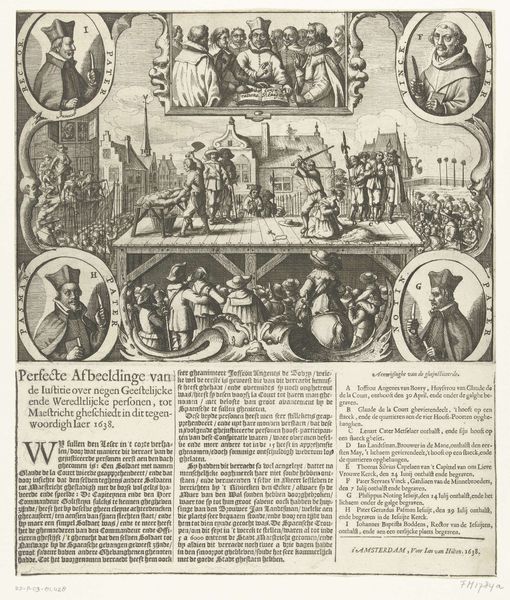
Willem III op de Hollandse Leeuw verjaagt pater Peters op de draak van Babylon, 1689 1689
0:00
0:00
anonymous
Rijksmuseum
print, engraving
#
narrative-art
#
baroque
# print
#
old engraving style
#
history-painting
#
engraving
Dimensions: height 341 mm, width 290 mm
Copyright: Rijks Museum: Open Domain
Curator: This engraving, currently held at the Rijksmuseum, is entitled "Willem III op de Hollandse Leeuw verjaagt pater Peters op de draak van Babylon," created anonymously in 1689. It presents a rather dramatic, almost theatrical scene. What's your initial take on it? Editor: Chaotic, wouldn't you say? There’s so much swirling action and symbolic weight loaded into a single image, the dark lines of the engraving contributing to a very ominous atmosphere. It's a potent mix of political statement and religious allegory. Curator: Absolutely. The central image is William of Orange, astride the Dutch Lion, driving out Father Peters, who’s perched atop a dragon representing Babylon. The visual symbolism is richly layered here, connecting political events to biblical narratives. We can read William as a Protestant champion. Editor: The dragon of Babylon is such a strong symbol, encapsulating so many perceived evils. And to have William depicted on the Dutch Lion—it's a powerful declaration of Dutch strength and righteousness. Does the portrayal of Father Peters tell us anything about the contemporary perspective on Catholicism? Curator: Without a doubt. Father Peters, as the advisor to the Catholic King James II of England, embodies the perceived threat to Protestant dominance. This print emerges from a very specific political context: the Glorious Revolution, in which William ousted James from the English throne. Editor: So the "chaos" I initially observed speaks to the tumultuous times and the clash of ideologies. Do you see this engraving as effective propaganda, manipulating symbols to sway public opinion? Curator: It undeniably served that purpose, solidifying William's image as a heroic figure, sent to liberate the Dutch, but also Protestants everywhere from perceived Catholic tyranny. It reinforced existing prejudices and bolstered support for William’s cause. Editor: It’s fascinating how potent imagery can be when intertwined with politics and religion, especially during times of upheaval. It offers such insight into the values and anxieties of that historical moment. Curator: Indeed. These kinds of works show how visual rhetoric contributed to shaping the cultural landscape and bolstering certain political positions during moments of intense transformation.
Comments
No comments
Be the first to comment and join the conversation on the ultimate creative platform.
